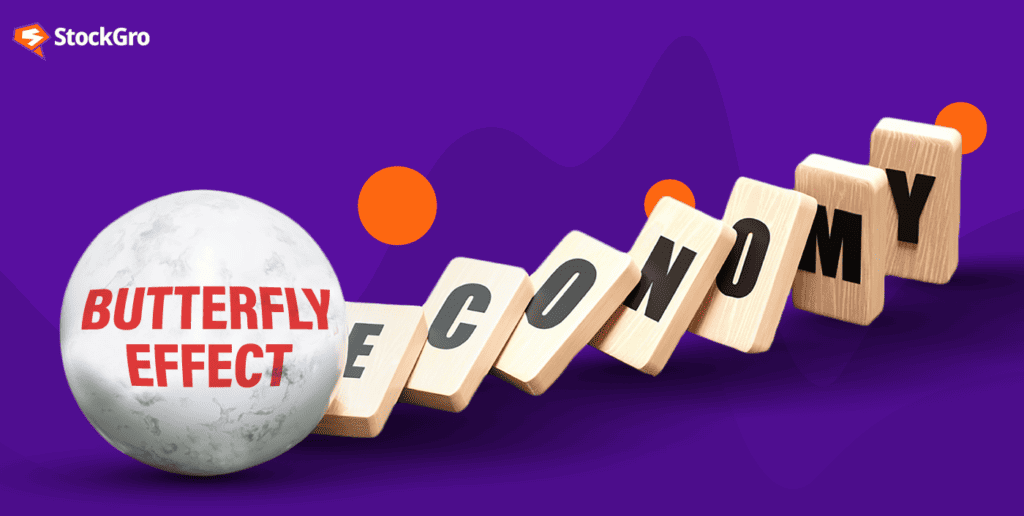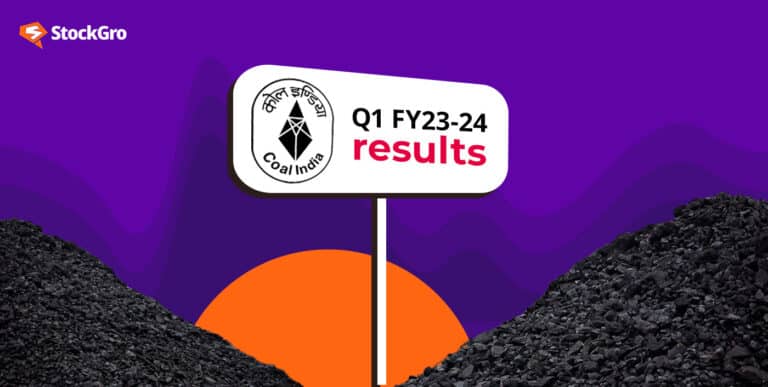
According to estimates by the International Monetary Fund (IMF), the COVID-19 pandemic could cost the global economy around $12.5 trillion through 2024. That’s huge! Even more heartbreaking is that as of August 09, 2023, around 69,05,651 people have died because of COVID-19 globally.
Though it’s difficult to tell what the exact economic damage the COVID-19 pandemic has caused, what is evident is that it has had severe negative impacts on the global economy. From deaths to job losses to a fall in GDP growth rate to investors losing money, the pandemic created havoc.
You might be wondering why I’m talking about the COVID-19 pandemic. This is to bring to your attention how a small incident in the Wuhan market in China led to a widespread pandemic that caused the global economy and businesses to plummet. This is what we call the butterfly effect.
Curious to know more about it, keep reading!
What is the butterfly effect?
The butterfly effect also referred to as “the chaos theory” or “the ripple effect”, believes that if a butterfly flutters its wings in one region of the earth, it can cause a storm to happen in another.
The principle says if a butterfly flaps its wings in one country, it can cause a hurricane in another. Simply put, even a small event can result in something with significant consequences.
For example, one day, you get up early and feel like having a coffee. You go to a nearby coffee shop and see a school friend. You both start talking, and your friend offers you a position at his start-up. See how a simple coffee run changed your life forever. You might not have got that job if you hadn’t gotten up early that day.
Did you see the movie Oppenheimer? It also had a butterfly effect.
Julius Robert Oppenheimer created the first atomic bomb during World War II. So, do you think things would have been different if he hadn’t done that? Maybe there wouldn’t have been the bombings of Hiroshima and Nagasaki, the cold war and the nuclear arms race. Who knows?
Knowing that the butterfly effect could have positive and negative impacts is important.
You may also like: Investor’s guide to India VIX (volatility index)
How it originated?
The butterfly effect was discovered in the 1960s by Edward Lorenz, a meteorology professor at MIT. He was curious about how accurate weather forecasts could be.
In the 1960s, weather statisticians believed future weather could be predicted just by looking at historical records. But Edward Lorenz was sceptical.
So, he built a computer model to predict the weather and ran some experiments. He also believed that one decimal point would not make a difference. But he was wrong.
One day, while running the test, he typed in a slightly different number from the original one, thinking it wouldn’t matter much. To his surprise, the test produced a completely different weather pattern than the old one.
Now, he understood how a tiny change in the input can change the output. He called this phenomenon the butterfly effect because he imagined that something as small as a butterfly’s wings could affect the weather somewhere else.
The butterfly effect is not just about the weather; it could be related to anything, including earthquakes, traffic jams, finance, human behaviour, etc.
Butterfly effect shaping our lives
Initially, the butterfly effect was used to decode weather changes, but today it can also have profound effects on our lives, personal finance and investing.
You know people say that you should choose your career very carefully? Well, what if you had picked something else? Maybe you would have been happier or richer or both. Or maybe not. You never know, right? The point is any small change in your plans, whether it’s your career, job or marriage, can change your entire future.
The butterfly principle can help us shape our lives even by doing small things every day. Whether reading a book, exercising, or meditating, you’re building habits that will shape your future.
And it’s not just about you. Your actions can also affect others in ways you can’t imagine. A compliment, a smile, or a helping hand can lighten up someone’s day or even change their life.
Also Read: Understanding the P/E ratio
Understanding the butterfly effect in personal finance
The butterfly principle also goes for personal finance. Let’s see how? Personal finance is all about how you manage your money, save it and invest it to gain financial freedom.
You might think that spending Rs. 10,000 is no big deal. It’s just Rs. 10,000 less in your pocket, right? Wrong!
If you want financial freedom, you need to see Rs. 10,000 differently. You need to think about the butterfly principle of spending money.
Saving money is obvious, but what’s not is the hidden power of saving money. It’s the power of COMPOUNDING. That’s the secret to turning a little money into a lot of money. It’s how you can turn thousands into millions over time.
Compounding is beneficial, especially if you’re young. You have TIME on your side, and time is your best friend when it comes to compounding. The longer you compound, the more incredible the results.
So every time you spend or save money, think about the butterfly effect. Think about how each rupee spent is a rupee that’s not compounding for you. Think about how small choices now can have huge impacts later on your wealth.
It does not mean you must not enjoy life and spend money, but it’s about being more cautious about your spending habits. The less you spend, the more you save and invest, and the higher your investment corpus.
Stock market and the butterfly effect
The butterfly effect says that if a butterfly flutters its wings in one region of the earth, it can cause a storm to happen in another. The butterfly effect meaning in investment, is that it is a small bump in the stock market or economy of one nation that can have a significant impact on another country’s stock market.
For example, the bankruptcy of Lehman Brothers in 2008 led to the collapse of the economy worldwide, including in India.
In addition to company bankruptcy, events like
- Natural calamities,
- Political turmoil,
- Monetary policies,
- Industry reports,
- Elections, etc., in a particular country can also have significant implications for another country.
Thanks to globalisation, liberalisation and technology, countries worldwide are affected by what happens elsewhere. This means that a small glitch in one country’s market can have significant consequences for other countries. But, the butterfly effect does not always have a negative impact.
Investors can also use the butterfly effect to create a positive impact on society. Nowadays, younger investors are more keen on doing something that has lasting benefits for society. Gen Z wants to build a better future for the next generations.
To do that, Gen Z are open to making green investments or investing in social causes. They wish to make a positive impact on the environment and the world with eco-investing.
Also Read: Beyond the paycheck: Exploring compensation meaning through equity
Lessons for investors
The butterfly effect can affect your portfolio negatively as well as positively. But you can’t foresee these events or how they will affect your investments. That’s why you need to be careful and take some steps to protect your portfolio from the unpredictable.
Investors can take these steps to reduce the impact of the butterfly effect:
1. Diversification
The butterfly principle can cause potential losses at any time, and you need to be prepared for that. One way to protect your money and reduce risk is to spread it across investment types. This way, you won’t lose anything by betting on one thing.
Additionally, you should invest in lower uncorrelated assets. That way, if one doesn’t perform well, the other will and your portfolio will be safe.
2. Spend Less, Save More
Another way to combat the butterfly principle is to spend less and save more so you can invest. If you start saving a little more often, you can build more wealth later on. If you start investing today, you can reap the benefits of compounding to help grow your money. Therefore, you need to monitor and review your spending and savings frequently.
Butterfly Effect examples
One of the best examples of butterfly effect is the Global Financial Crisis of 2008. When Lehman Brothers declared bankruptcy in 2008, the US economy collapsed, and the world saw disastrous consequences.
Between late 2007 and 2009, almost $8 trillion disappeared because of the stock market crash. Many people lost their jobs. The worst was in October 2009, when one in ten people had no work. It made the world economy shrink by more than $2 trillion.
Another recent example of the butterfly effect is the Russian invasion of Ukraine on February 24, 2022. This war not only affected Russia and Ukraine but economies worldwide. The war greatly impacted the global economy, particularly in the energy and food markets. The war also drove world crude oil prices to record highs, causing inflation and interest rates to rise.
Wrap-up
In conclusion, the butterfly effect teaches you to be judicious in your investment choices. You might feel that you are knowledgeable and confident in your choices, but you need to accept that you cannot predict or control the stock market. Thus, it is wise to diversify your portfolio according to your goals and risk appetite.

